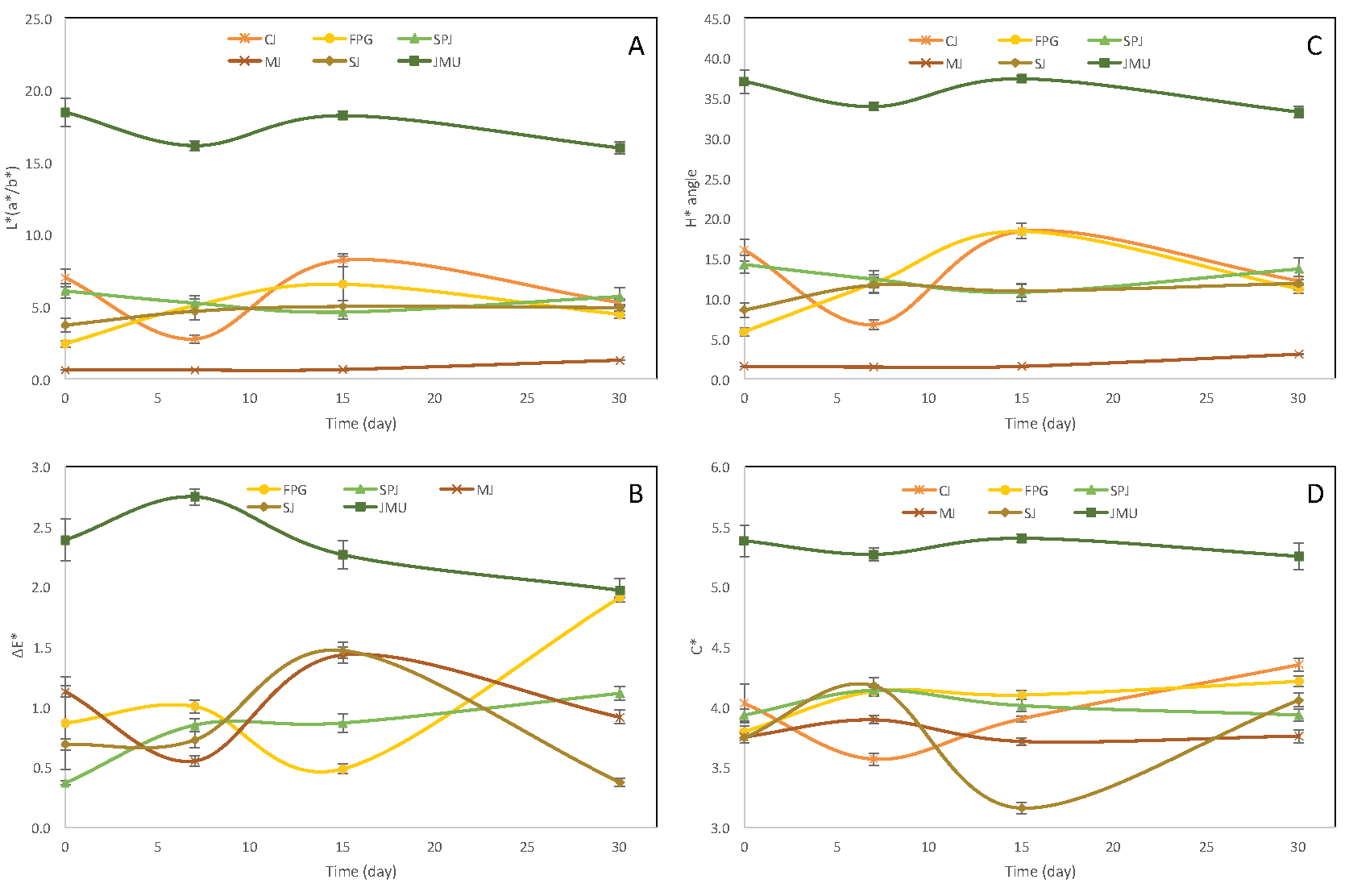 |
|
The bio-functionality of blackberry juice has acquired great relevance in the field of foodstuff, since it reduces the risk of chronic-degenerative diseases due to its high content of antioxidant compounds such as polyphenols/anthocyanins. However, conventional thermal processing decreases the content of these compounds; hence, alternative technologies —as microwaves and ultrasound— are currently in research. In this context, the effect of thermal and microwave/ultrasound processing on the physicochemical properties, polyphenols (mg GAE L-1) and anthocyanins (mg C3G L-1), antioxidant capacity (FRAP and DPPH), and microbiological stability of blackberry juice were evaluated. The results showed that pH and °Brix increased their value in microwave/ultrasound processed juice (MUJ) compared to conventionally pasteurized juice (FPJ and SPJ) and raw juice (CJ). MUJ showed good microbiological stability after 30 days of storage at 4 °C as well as conventionally processed juices (FPJ and SPJ); nonetheless, in MUJ increased color parameters (L * (a * / b *), ΔE *, H *, C *), content of polyphenols/anthocyanins and bioactivity (antioxidant) were found compared to other juices. Therefore, the microwave/ultrasound combination processing may be used in order to obtain a functional beverage (high in antioxidants), safe for human consumption (good microbiological stability), that preserves its sensory characteristics after one month of storage.
Keywords: blackberry juice, microwaves/ultrasound, polyphenols/anthocyanins, antioxidant activity, microbial stability.
|
|
 |

